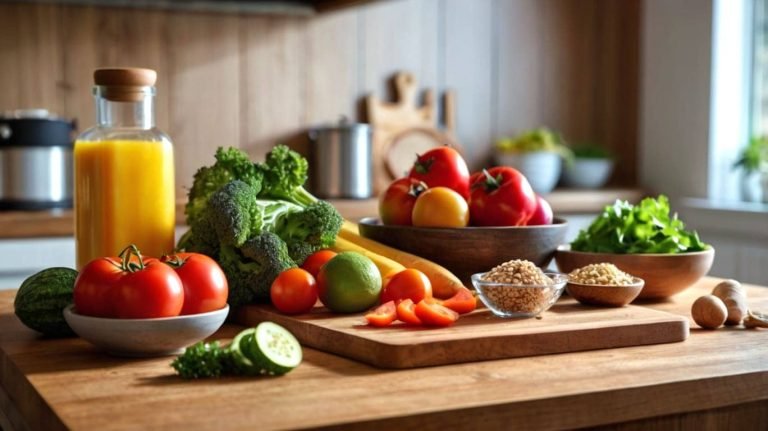When it comes to transforming your health, saving time, and staying on budget, meal planning is your secret weapon. Imagine walking into your kitchen knowing exactly what you’ll cook for dinner, with all the ingredients waiting for you, and feeling confident that what you’re eating supports your goals—whether that’s weight loss, building healthy habits, or maintaining a balanced diet. Sounds like a dream, right? Well, it’s entirely possible with the right meal planning strategies.
In this comprehensive guide, we’ll dive into everything you need to know to become a meal planning pro. From understanding why meal planning is so effective to mastering the art of meal prep, creating a stress-free grocery list, and discovering easy, healthy recipes for every occasion, we’ve got you covered. Let’s get started!
1. Why Meal Planning is a Game-Changer for Healthy Habits
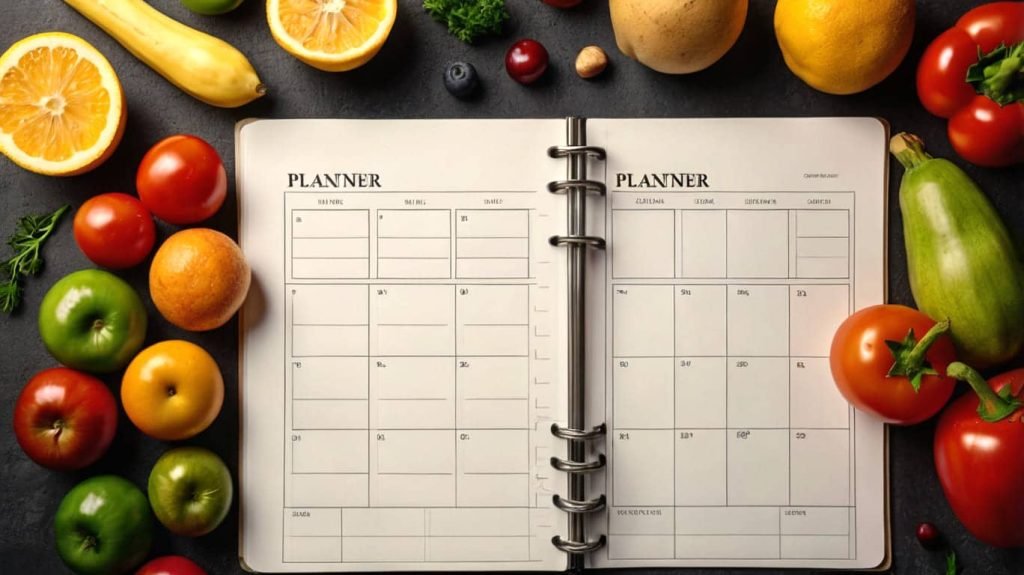
Meal planning isn’t just about knowing what’s for dinner; it’s a powerful tool for building healthy habits and achieving your wellness goals. But why is meal planning so effective?
a. The Science Behind Meal Planning and Weight Loss
Studies have shown that people who regularly plan their meals are more likely to stick to a balanced diet and achieve their weight loss goals. One reason is that planning meals reduces impulsive eating and the temptation to grab quick, unhealthy snacks. When you know what you’re eating ahead of time, you’re less likely to reach for those cookies or order takeout.
Research from the American Journal of Preventive Medicine found that individuals who spend time preparing meals tend to consume fewer calories, less sugar, and more fruits and vegetables compared to those who don’t. Meal planning makes it easier to choose nutrient-dense foods that support your weight loss journey.
b. Creating a Balanced Diet with Meal Planning
One of the keys to a healthy lifestyle is maintaining a balanced diet, rich in all the nutrients your body needs. With meal planning, you can ensure that your weekly menu includes a variety of foods—think lean proteins, whole grains, healthy fats, and plenty of fruits and veggies. This not only keeps your meals interesting but also helps you avoid nutrient deficiencies.
Meal planning allows you to create a diverse menu that includes everything from gluten-free recipes and vegan meals to low-carb recipes and family favorites. By doing so, you support your overall health and wellbeing.
c. Saving Time, Money, and Stress with Meal Planning
Let’s be real—life can be hectic. Between work, family, and social commitments, who has time to cook a healthy meal every night? That’s where meal planning comes in. By planning your meals for the week, you save precious time and reduce stress. No more last-minute dashes to the store or wondering what’s for dinner.
Not only does meal planning save time, but it also helps you stick to a budget. By making a grocery list based on your meal plan, you avoid buying unnecessary items and reduce food waste.
2. Getting Started: How to Create Your Ultimate Meal Planning Blueprint
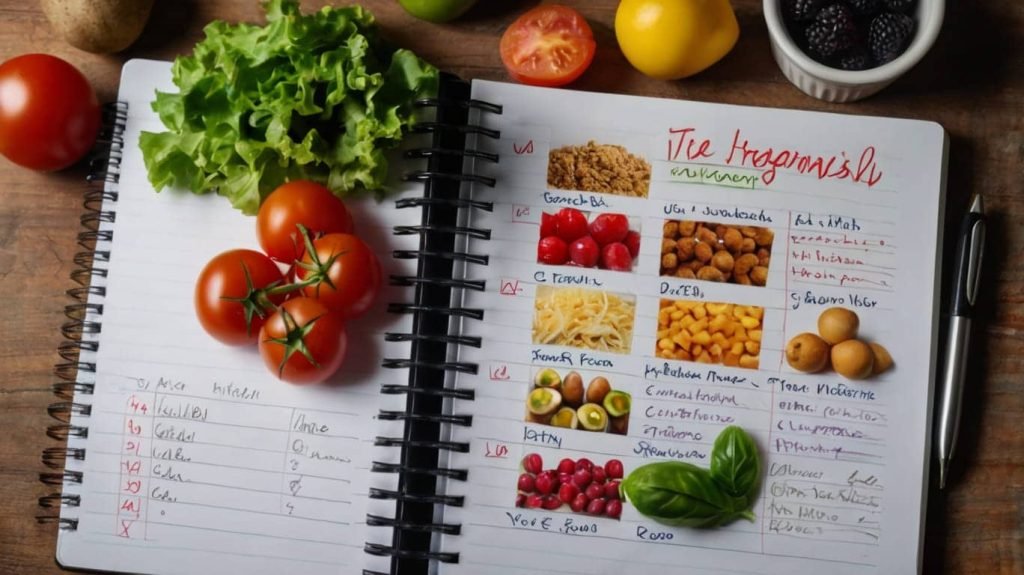
Ready to dive in? Here’s how to create a meal planning routine that works for you.
a. Step 1: Define Your Goals and Priorities
Before you start planning, think about your goals. Are you focused on weight loss? Building muscle? Eating more plant-based meals? Understanding your objectives will help you tailor your meal plan to meet your specific needs.
Next, consider any dietary restrictions or preferences, such as vegetarian, vegan, gluten-free, or low-carb options. This will guide your recipe choices and ensure that your meals align with your lifestyle.
b. Step 2: Choose a Meal Planning Method
There are several ways to approach meal planning, and the best method is the one that fits your life. Some people prefer to plan all their meals for the week, while others might focus on dinner recipes and keep breakfast and lunch simple. Here are a few popular approaches:
- Batch Cooking: Prepare large quantities of a few dishes and portion them out for the week.
- Weekly Menu Planning: Plan each meal for the week in advance and shop for all the ingredients at once.
- Flexible Planning: Choose a few key ingredients or recipes and mix and match them throughout the week.
c. Step 3: Gather Recipes and Make a Grocery List
Now comes the fun part—choosing your recipes! Whether you’re looking for easy healthy recipes for dinner, quick low-calorie recipes, or kid-friendly healthy recipes, there are plenty of options to suit your taste buds. Make sure to select recipes that fit your goals and preferences.
Once you’ve picked your recipes, create a grocery list based on the ingredients you’ll need. This step is crucial for staying organized and avoiding impulse buys.
3. Mastering Meal Prep: Tips and Tricks for Success
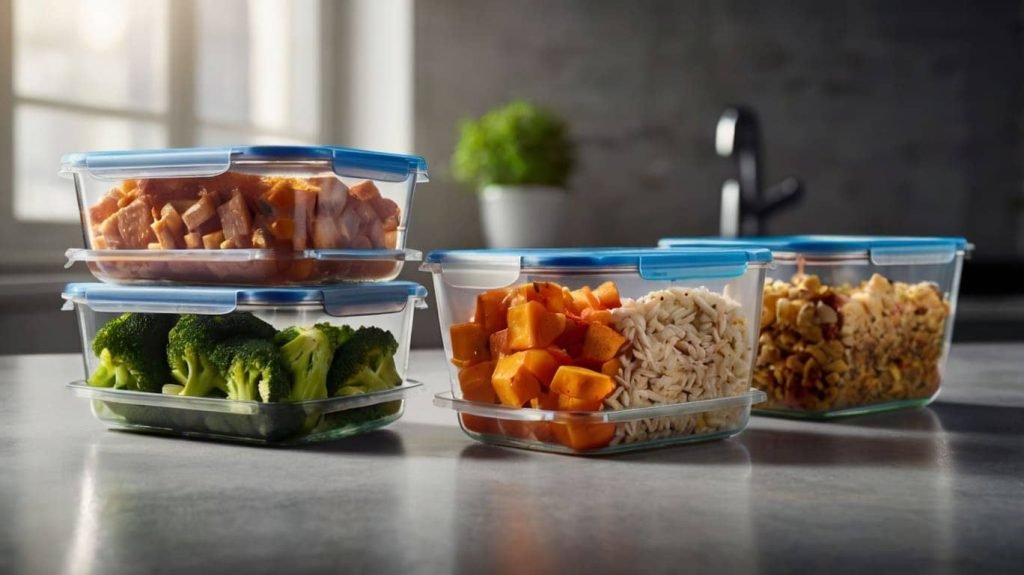
Meal prep is a critical part of meal planning. It’s all about preparing ingredients or entire meals in advance so that cooking is quick and easy during the week.
a. How to Meal Prep Like a Pro
To get started with meal prep, set aside a specific day each week to prep your meals. Many people choose Sunday, but find a day that works best for you. Start by washing and chopping vegetables, cooking grains like quinoa or rice, and marinating proteins.
Consider investing in quality storage containers to keep your prepped meals fresh. Opt for glass containers with airtight lids to prevent leaks and spills. Label your meals with the date to ensure freshness.
b. Meal Prep Ideas for Every Dietary Need
Meal prep isn’t one-size-fits-all. Depending on your dietary needs, you can tailor your meal prep to fit:
- Vegetarian Meal Prep Ideas: Think roasted vegetables, chickpea salads, and lentil stews.
- Low-Carb Options: Opt for grilled chicken, sautéed greens, and cauliflower rice.
- Healthy Breakfast Ideas: Prepare overnight oats, chia seed pudding, or smoothie packs.
c. Keeping Your Meals Fresh and Tasty
No one wants to eat soggy salads or dry chicken. To keep your meals fresh, store dressings and sauces separately and add them just before eating. Use fresh herbs, spices, and a squeeze of lemon or lime juice to enhance flavors and keep meals interesting.
4. Building a Healthy, Balanced Diet with Meal Planning

Creating a balanced diet doesn’t have to be complicated. Here’s how to ensure your meals provide all the nutrients your body needs.
a. The Importance of Macros: Protein, Carbs, and Fats
When planning meals, aim to include a balance of macronutrients—proteins, carbohydrates, and fats. Each macronutrient plays a crucial role in your health:
- Proteins: Essential for muscle repair and growth. Include lean meats, fish, tofu, legumes, and dairy.
- Carbohydrates: Your body’s primary energy source. Focus on complex carbs like whole grains, quinoa, and sweet potatoes.
- Fats: Necessary for brain health and hormone production. Choose healthy fats from avocados, nuts, seeds, and olive oil.
b. Including a Variety of Fruits and Vegetables
Fruits and vegetables are rich in vitamins, minerals, and antioxidants. Aim for a colorful plate by including a variety of options such as leafy greens, berries, bell peppers, and carrots. This diversity ensures you get a wide range of nutrients.
c. Don’t Forget Hydration and Healthy Snacks
Hydration is an essential part of a healthy diet. Make sure to drink enough water throughout the day. Healthy snacks, such as nuts, fruit, and yogurt, can help you stay on track between meals and prevent overeating.
5. Overcoming Common Meal Planning Challenges

Meal planning can seem daunting at first, but with a little practice, it becomes second nature. Here are solutions to common obstacles:
a. “I Don’t Have Time to Meal Plan!”
We get it—life is busy. Start small by planning just a few meals each week. As you become more comfortable, gradually increase the number of meals you plan.
b. “I’m Tired of Eating the Same Thing!”
Variety is the spice of life! Keep things interesting by experimenting with new recipes, ingredients, and cuisines. Consider incorporating a themed night, such as Meatless Mondays or Taco Tuesdays.
c. “Healthy Food is Too Expensive!”
Healthy eating doesn’t have to break the bank. Buy in bulk, shop seasonal produce, and make use of leftovers. Consider meal planning around sales or discounts at your local grocery store.
6. Delicious Recipes to Kickstart Your Meal Planning Journey
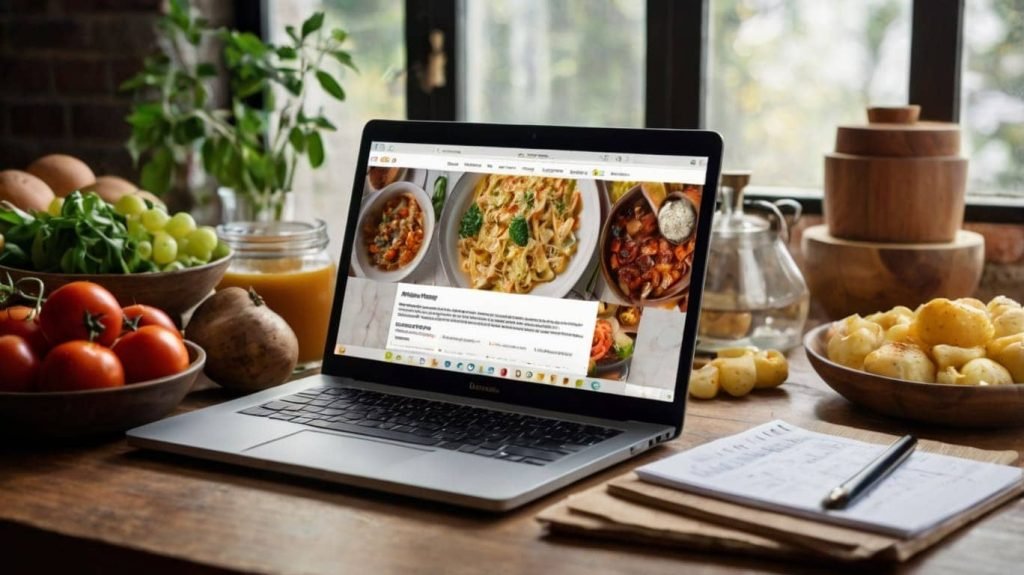
Ready to start cooking? Here are some delicious and easy recipes to help you get started with meal planning.
a. Quick and Easy Breakfast Ideas
- Overnight Oats: Customize with your favorite fruits and nuts.
- Veggie Omelette: Packed with protein and veggies to start your day right.
- Smoothie Packs: Prep ingredients for your favorite smoothies in advance.
b. Simple Lunch Recipes for Busy Days
- Chicken Caesar Salad Wrap: A light and satisfying meal.
- Quinoa and Black Bean Salad: Rich in protein and fiber.
- Lentil Soup: Hearty, filling, and perfect for meal prep.
c. Healthy Dinner Recipes Everyone Will Love
- Baked Salmon with Veggies: A low-carb, high-protein option.
- Stir-Fry with Tofu and Broccoli: Quick, easy, and customizable.
- Spaghetti Squash Bolognese: A lighter take on a classic comfort dish.
7. Meal Planning for Specific Dietary Needs and Preferences
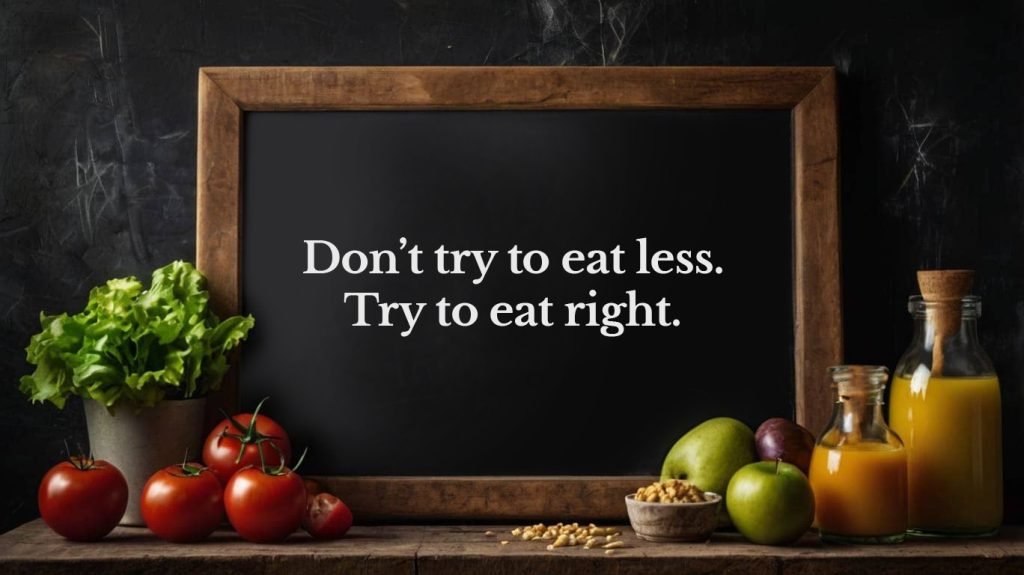
Everyone’s dietary needs and preferences are different, and that’s where meal planning truly shines—it’s customizable! Whether you’re vegan, gluten-free, or following a low-carb diet, meal planning makes it easy to stick to your chosen path.
a. Meal Planning for Vegans and Vegetarians
If you’re embracing a plant-based lifestyle, meal planning can help ensure you’re getting all the nutrients you need. Focus on incorporating a variety of plant-based proteins, such as lentils, chickpeas, tofu, and quinoa. Don’t forget about healthy fats from avocados, nuts, and seeds, and make sure to eat a rainbow of fruits and vegetables daily.
Pro Tip: To keep things interesting, plan your meals around different global cuisines. Think Indian chickpea curry, Mexican black bean tacos, or Mediterranean falafel bowls.
b. Gluten-Free Meal Planning Made Easy
For those with gluten intolerance or celiac disease, meal planning can help you avoid gluten contamination and ensure your meals are safe and delicious. Focus on naturally gluten-free foods like rice, quinoa, potatoes, and a wide array of fruits and vegetables.
Experiment with gluten-free grains and flours like almond flour, coconut flour, and buckwheat. Keep a list of your favorite gluten-free recipes and use it as a reference when planning your weekly meals.
c. Low-Carb Meal Planning for Weight Loss
For those following a low-carb diet for weight loss or health reasons, meal planning is a powerful tool. Focus on high-protein foods like chicken, fish, tofu, and eggs, along with plenty of leafy greens and non-starchy vegetables.
Replace traditional carb-heavy foods with low-carb alternatives like cauliflower rice, zucchini noodles, and cloud bread. Pre-planning your meals ensures you stay within your carb limits while still enjoying tasty and satisfying dishes.
8. Tips for Creating a Healthy, Cost-Effective Grocery List
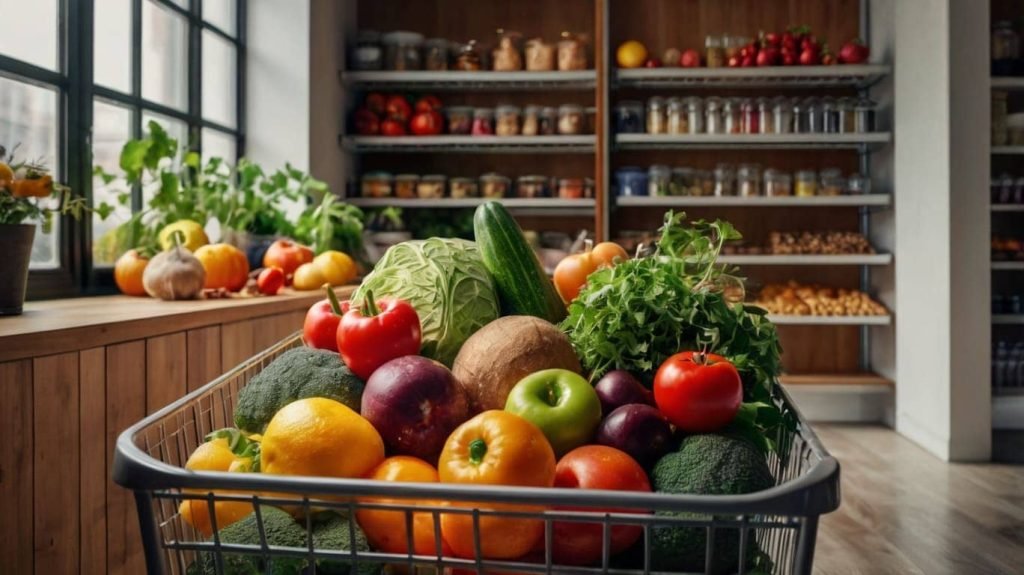
One of the key components of successful meal planning is creating a smart grocery list. Here’s how to build a grocery list that’s healthy, cost-effective, and easy to follow.
a. Organize Your Grocery List by Categories
Break your list down into categories such as produce, dairy, meats, pantry staples, and frozen items. This makes your shopping trip quicker and reduces the chances of forgetting something.
For example:
- Produce: Leafy greens, tomatoes, onions, berries, bananas
- Dairy: Greek yogurt, cheese, milk alternatives
- Meat & Seafood: Chicken breast, salmon, tofu
- Pantry Staples: Olive oil, quinoa, beans, spices
b. Buy in Bulk for Long-Term Savings
Purchasing in bulk can save you a lot of money, especially for items you use frequently, such as grains, nuts, seeds, and frozen vegetables. Invest in airtight containers to keep these items fresh.
Look for sales and buy in bulk when your favorite items are discounted. This is particularly useful for expensive ingredients like olive oil, nuts, or specialty flours.
c. Make Use of Seasonal and Local Produce
Buying seasonal produce not only ensures that you’re getting fruits and vegetables at their peak flavor but can also be much more cost-effective. Visit local farmers’ markets or look for seasonal deals at your grocery store.
Check out resources like USDA Seasonal Produce Guide to know which fruits and vegetables are in season.
9. Meal Planning for Families: Getting Everyone on Board

Meal planning can be a family affair, making it easier to cater to different tastes and dietary needs while saving time and money. Here’s how to make meal planning a fun and inclusive activity for the whole family.
a. Involve Everyone in the Planning Process
Get the whole family involved in planning meals. Ask each family member to pick one meal they’d like to have during the week. This helps ensure everyone has something to look forward to and reduces the likelihood of complaints.
Use a whiteboard or a printable meal planner template to display the weekly menu in the kitchen. This helps everyone know what to expect and even builds excitement around meal times.
b. Focus on Kid-Friendly Healthy Recipes
Finding meals that kids will eat and that are also healthy can be challenging, but it’s not impossible. Start with recipes that are familiar and easy to adapt, like whole wheat pasta with homemade tomato sauce or baked chicken nuggets with sweet potato fries.
Make healthy swaps, like using Greek yogurt instead of sour cream or sneaking veggies into smoothies or pasta sauces. Try recipes like kid-friendly healthy recipes to inspire your weekly plan.
c. Batch Cooking and Freezer-Friendly Meals
Prepare larger portions of family favorites and freeze half for future meals. This not only saves time but also ensures you have healthy meals on hand for those extra busy days.
Consider meals like casseroles, soups, and stews that are easy to freeze and reheat. Label them with the name and date to keep your freezer organized and prevent food waste.
Staying Motivated: Turning Meal Planning into a Habit
Like any new routine, sticking with meal planning can be challenging at first. Here are some tips to help you stay motivated and make meal planning a long-term habit.

a. Set Realistic Goals and Celebrate Wins
Start small and set achievable goals. For example, begin by planning just three meals per week and gradually increase as you become more comfortable. Celebrate small victories, like sticking to your meal plan for a week or trying a new healthy recipe.
Tracking your progress with a meal planning app or journal can also help you stay on track and see how far you’ve come.
b. Make It Fun with Theme Nights
Introduce theme nights to add some excitement to your meal planning. Think Meatless Mondays, Taco Tuesdays, or Pasta Fridays. These themes can help streamline your planning process while keeping meals fun and varied.
Invite family or friends to join in and share their favorite recipes for each theme night. This creates a sense of community and can make meal planning feel like less of a chore.
c. Use Meal Planning Apps and Tools
There are countless apps and tools designed to make meal planning easier, from apps that generate grocery lists to those that suggest recipes based on what you already have at home. Some popular options include Mealime and Paprika Recipe Manager.
Experiment with different apps to find one that suits your needs and lifestyle.
Meal Planning Resources: Where to Find Inspiration and Support
Meal planning doesn’t have to be a solo journey. There are plenty of resources out there to help you stay inspired and connected with a community of like-minded individuals.
a. Online Communities and Meal Planning Blogs
Join online forums and communities like Reddit’s r/MealPrepSunday or Facebook groups dedicated to meal planning. These communities are great for sharing tips, recipes, and inspiration.
Additionally, follow meal planning blogs that align with your dietary preferences and goals. For example, check out Budget Bytes for affordable and healthy meal ideas or Minimalist Baker for simple, plant-based recipes.
b. Books and Podcasts on Healthy Eating and Meal Planning
If you prefer offline resources, there are many great books and podcasts focused on healthy eating and meal planning. Books like “The Meal Prep King Plan” by John Clark or “Clean Eating Meal Prep” by Carrie Forrest offer comprehensive guides and recipes.
Podcasts like “The Doctor’s Farmacy” by Dr. Mark Hyman or “The Minimalist Vegan Podcast” also provide valuable insights and tips on maintaining a healthy diet.
c. Infographics and Visual Guides
Infographics are a quick and easy way to absorb information and get meal planning tips. Websites like Pinterest have countless infographics on topics ranging from how to build a balanced meal to time-saving meal prep hacks.
Here’s a great infographic on How to Meal Prep for Beginners that breaks down the basics in a visually appealing way.
Ready to Take Your Meal Planning to the Next Level? Discover More!
Now that you have a solid foundation in meal planning, it’s time to put it into action. Whether you’re looking to save time, lose weight, or simply eat healthier, meal planning can help you achieve your goals.
Don’t stop here—explore our other articles for more in-depth guides, delicious recipes, and expert tips on maintaining a balanced, healthy lifestyle. Remember, the journey to a healthier you starts with a single meal—planned and prepared with care. Happy meal planning!


